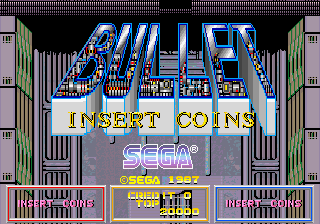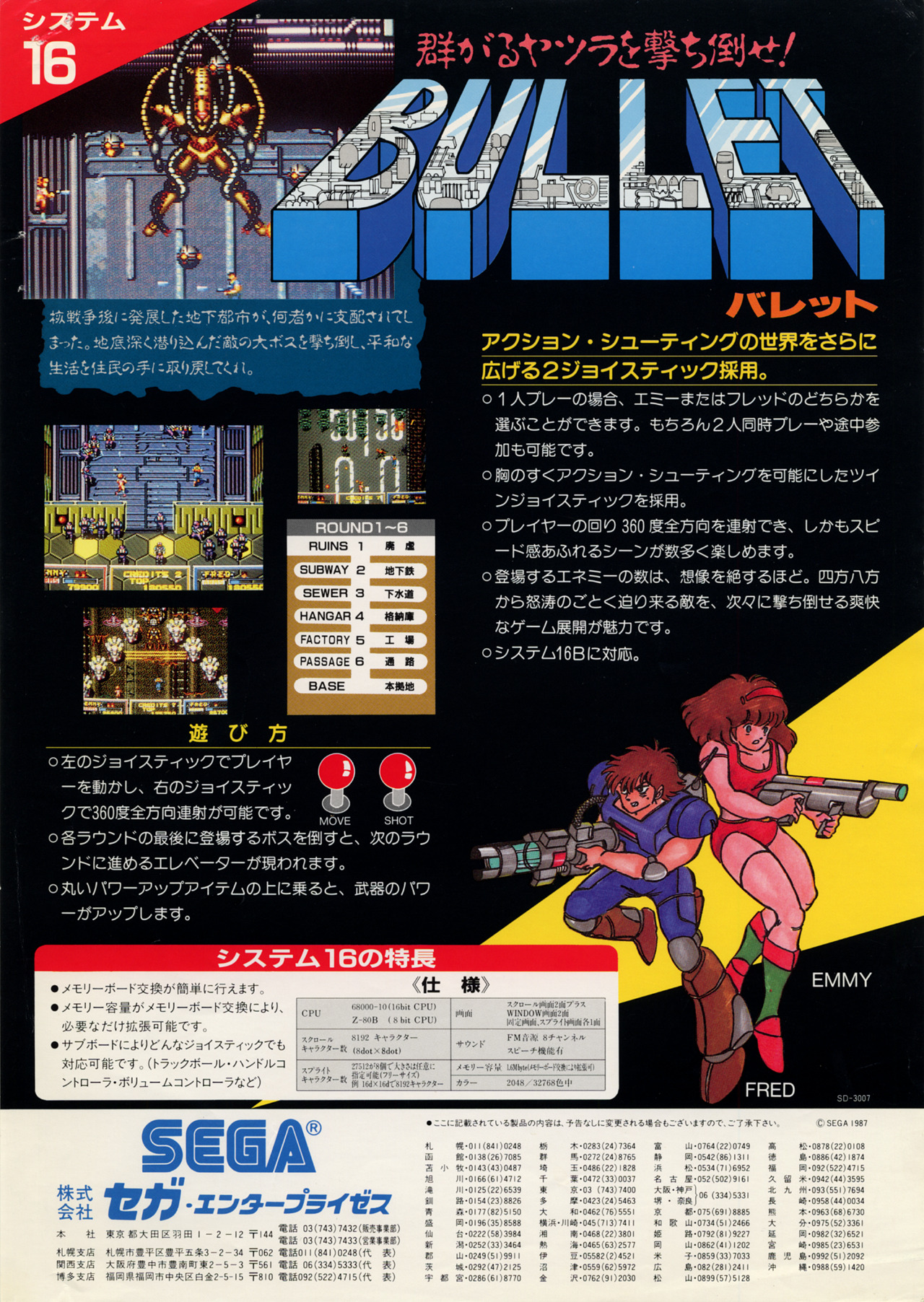Difference between revisions of "Bullet"
From Sega Retro
(added Levels) |
(→Levels) |
||
| Line 17: | Line 17: | ||
{{InfoTable|imagewidths=200| | {{InfoTable|imagewidths=200| | ||
{{InfoRow | {{InfoRow | ||
| − | | title= | + | | title=Ruins (廃墟){{fileref|Bullet System16 JP Flyer.jpg}} |
| screenshot= | | screenshot= | ||
| desc= | | desc= | ||
}} | }} | ||
{{InfoRow | {{InfoRow | ||
| − | | title= | + | | title=Subway (地下鉄){{fileref|Bullet System16 JP Flyer.jpg}} |
| screenshot= | | screenshot= | ||
| desc= | | desc= | ||
}} | }} | ||
{{InfoRow | {{InfoRow | ||
| − | | title= | + | | title=Sewer (下水道){{fileref|Bullet System16 JP Flyer.jpg}} |
| screenshot= | | screenshot= | ||
| desc= | | desc= | ||
}} | }} | ||
{{InfoRow | {{InfoRow | ||
| − | | title= | + | | title=Hangar (格納庫){{fileref|Bullet System16 JP Flyer.jpg}} |
| screenshot= | | screenshot= | ||
| desc= | | desc= | ||
}} | }} | ||
{{InfoRow | {{InfoRow | ||
| − | | title= | + | | title=Factory (工場){{fileref|Bullet System16 JP Flyer.jpg}} |
| screenshot= | | screenshot= | ||
| desc= | | desc= | ||
}} | }} | ||
{{InfoRow | {{InfoRow | ||
| − | | title= | + | | title=Passage (通路){{fileref|Bullet System16 JP Flyer.jpg}} |
| + | | screenshot= | ||
| + | | desc= | ||
| + | }} | ||
| + | {{InfoRow | ||
| + | | title=Base (本拠地){{fileref|Bullet System16 JP Flyer.jpg}} | ||
| screenshot= | | screenshot= | ||
| desc= | | desc= | ||
Revision as of 03:05, 25 May 2023
| Bullet | |||||||||
|---|---|---|---|---|---|---|---|---|---|
| System(s): Sega System 16B | |||||||||
| Publisher: Sega | |||||||||
| Developer: Sega R&D 1 | |||||||||
| Genre: Shoot-'em-Up | |||||||||
| Number of players: 1-2 | |||||||||
|
This teeny-tiny article needs some work. You can help us by expanding it.
Bullet (バレット) is a top-down shoot-'em-up game released for Sega System 16B hardware by Sega in 1987. It uses two sticks (one for moving and one for shooting), much like Smash TV. Many Alien Syndrome developers also worked on Bullet.[2]
Levels
| Ruins (廃墟)[3] | |
|---|---|
| Subway (地下鉄)[3] | |
| Sewer (下水道)[3] | |
| Hangar (格納庫)[3] | |
| Factory (工場)[3] | |
| Passage (通路)[3] | |
| Base (本拠地)[3] | |
Production credits
- YASU
- MIYA
- SINO
- HOKO
- KAWA
- KATA
- KANE
- MURA
- KOIZ
- Music: Tohru Nakabayashi[2] (as NAKA)


